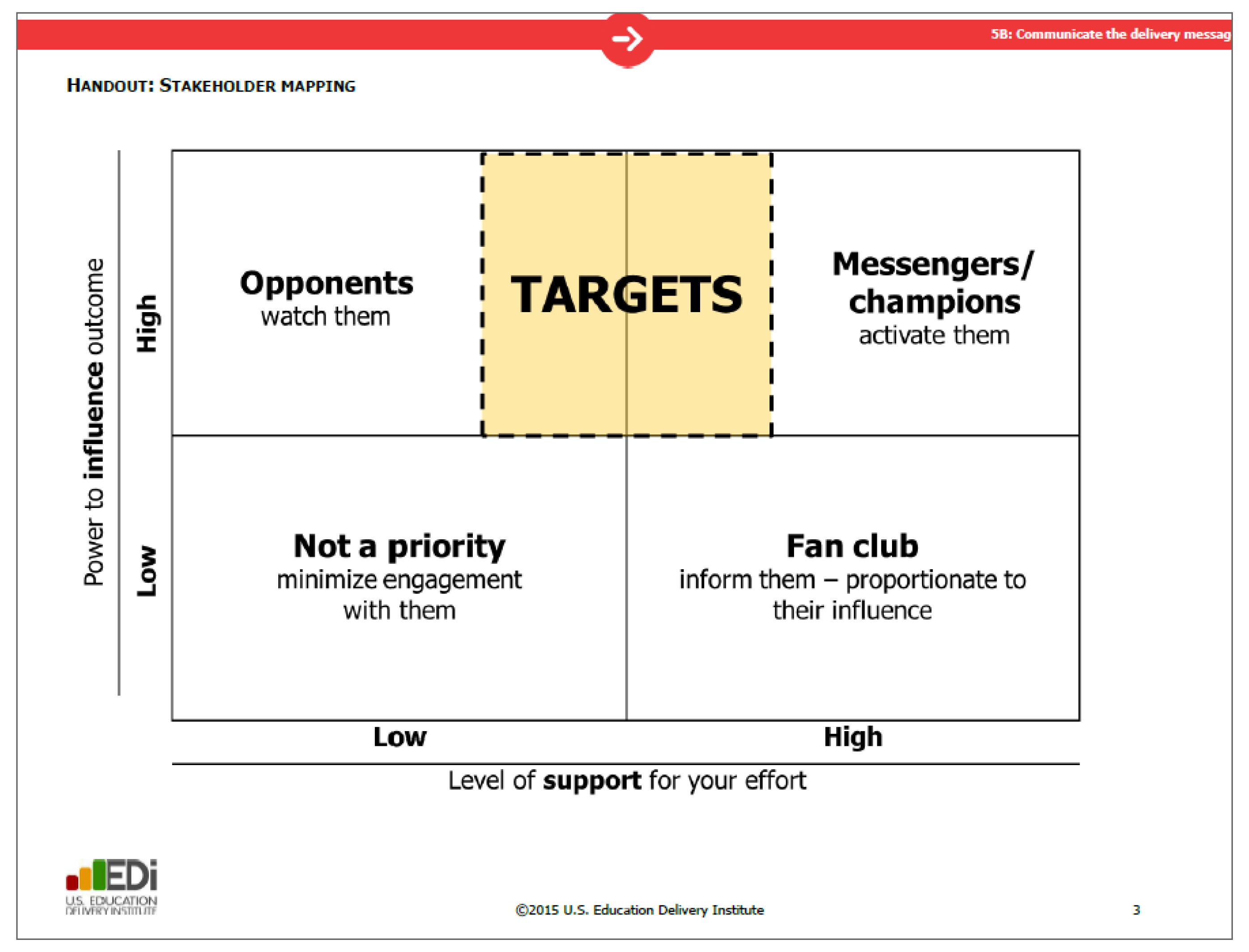Rather than focusing on tools, materials, activities, or the space, this module focuses on the people, who are at the front and center of any maker education program. It guides planners to identify and clarify stakeholders, messaging, decision-making power, and reach. You’ll identify and map out your stakeholders, their interests, and their influence. This mapping exercise allows you to create a cohesive and comprehensive communication plan for outreach and messaging.
 Reflect
Reflect
Ask yourself: What is your goal for engaging with your stakeholders? This could be anything from raising money or awareness, developing buy-in, or engaging folks in the process of planning or implementation. While you may have multiple goals, choose one to start (you can repeat this process for additional goals).
 Notice
Notice
Consider which stakeholders can help you reach your goals or are important for your effort. Sometimes support comes from unexpected places.
Example: At the Bubbler at Madison Public Library (a Making Spaces Hub), Rebecca Millerjohn, the teaching and learning librarian at Madison Public Library, noted that the school librarian was a key stakeholder in her work with schools to develop maker-centered learning efforts. Librarians often work across grade levels and collaborate with teachers throughout the school. They also have more flexible space and time. The school librarians were a central figure in these efforts, and thus were identified as a key stakeholder for implementing maker-centered learning at their sites.
Example: TEALS, an organization that promotes sustainable K–12 computer science programs, identifies counselors as key stakeholders in helping to increase the diversity of students enrolling in high school computer science classes. Counselors who understand the content and benefit of a computer science class can better encourage and support students who traditionally don’t take computer science classes to enroll and benefit.
 Apply
Apply
 Starting with the Stakeholder Cards developed by Maker Ed, identify specific people or entities, potential stakeholders in your community you know or would like to reach out to. Add notes as useful. For instance, identify what particular stakeholders care about (e.g., student engagement, learning outcomes, cultivating community, money, safety, test scores, etc.) to help you determine if they’re critical for supporting your goal. Use the blank cards to add groups/people who are missing.
Starting with the Stakeholder Cards developed by Maker Ed, identify specific people or entities, potential stakeholders in your community you know or would like to reach out to. Add notes as useful. For instance, identify what particular stakeholders care about (e.g., student engagement, learning outcomes, cultivating community, money, safety, test scores, etc.) to help you determine if they’re critical for supporting your goal. Use the blank cards to add groups/people who are missing.
 Read
Read
The next step is to map out your stakeholders.
For an example of what this looks like in practice, read through this activity and facilitation guide for stakeholder mapping developed by the U.S. Education Delivery Institute (EDI).
 Reflect
Reflect
Identify two dimensions to use to map out your stakeholders with respect to your effort, and create a 2×2 grid with those dimensions. If your goal is to launch a makerspace, you might choose the dimensions listed in the EDI activity (“power to influence outcome” versus “level of support for your effort”). Common dimensions are: power, influence, interest/need, support/attitude.
 Apply
Apply
Cut out and place your stakeholders on the grid you’ve created. This mapping helps you determine who you’re going to target with your communication and outreach plan.
 Explore
Explore
Want to keep going? These additional resources below are good next steps that build on the investigation of stakeholders & audience that you completed.
- Take the next step and develop your communication and outreach plan. You can use the Making Spaces Audience Identification & Outreach Planning tool to get started.
- The Remake Learning Playbook Playing Cards, developed by the Sprout Fund, can be used to create a sequence of steps you can take to start, build, or sustain a collaborative innovation network.
- If you haven’t developed a vision for your makerspace, refer to our Getting Started: Visioning module.
- For help thinking through how to tell your story, check out our Making the Case: Capturing Your Story module.
This module was developed in collaboration with Goli Mohammadi (editorial) and Kim Dow (design). Maker Ed would also like to thank Schmidt Futures for supporting the creation of these learning modules.

